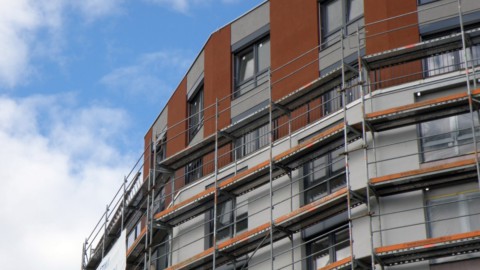After a 6,6% contraction in 2020, Atradius predicts a rebound of about 12% this year for the Italian construction sector and a growth of 0,5% in 2022. The Next Generation EU fund will be invested in large projects with respect for sustainability. Of the fund, €224 billion is allocated to Italy over the period 2021-2026, with around 50% earmarked for construction projects.
In the coming months, the sharp increase in commodity prices will negatively affect the profitability of enterprises. However, it is expected that builders will increasingly be able to pass on higher prices for building materials to end customers. While construction companies are heavily dependent on loans, le banks generally remain reluctant to deliver sector credit, due to the high delays and defaults observed in the last two years. Payments in the Italian construction sector take an average of 200 – 250 days. It is SMEs, in particular, that suffer. In the years leading up to the pandemic, the Italian construction sector stood out for a persistently high level of missed payments and corporate bankruptcies, including the defaults of several of the largest players. Thanks to the pandemic-related stimulus measures, both non-payment delays and insolvencies decreased in 2020-21. And no substantial increase is expected in the coming months.
Despite surging demand and favorable near-term default prospects, structural weaknesses continue to affect the sector's credit risk outlook. These include restrictive lending conditions combined with tight margins, uncertainty about the future spending capacity of public entities and high levels of default frequency.
Overseas, after a 1,9% contraction in 2020, theUS construction it will grow at an annual average of more than 6% both this year and next. Residential construction is buoyant, driven by demand for single-family housing. And thanks to ample government stimulus, robust demand for improvements and renovations continues. However, non-residential construction activity remains subdued for the time being, due to lower investment in offices. The civil engineering sector could see significant growth in 2022 and beyond, provided Congress passes a major infrastructure bill proposed by the government. A bill targeting global investment in aging infrastructure, including roads, highways, bridges, railways and broadband development.
Material shortages and volatility in input prices, particularly for timber, will continue to weigh on the sector in the near term, but are expected to ease in 2022. At the same time, the availability of manpower represents a problem in the US construction industry, with small businesses currently more susceptible to project delays triggered by workforce shortages. A lack of skilled labor and an aging workforce could reduce potential construction output in the medium term. Over the past twelve months, corporate profit margins have improved thanks to increased demand, the strength of supply chains and the ability to pass on higher commodity prices. Profit margins they should remain stable over the coming months as demand remains robust. The positive outlook offers comfort to banks to lend to industry, which increases the resilience of the sector. Currently some large construction companies are taking on more debt to finance acquisitions and increase their market share.
Payments in the construction industry take about 60 days on average. The state of payments is good and non-payments are expected to decrease in the coming months. The insolvency environment should remain stable, without expecting increases.





